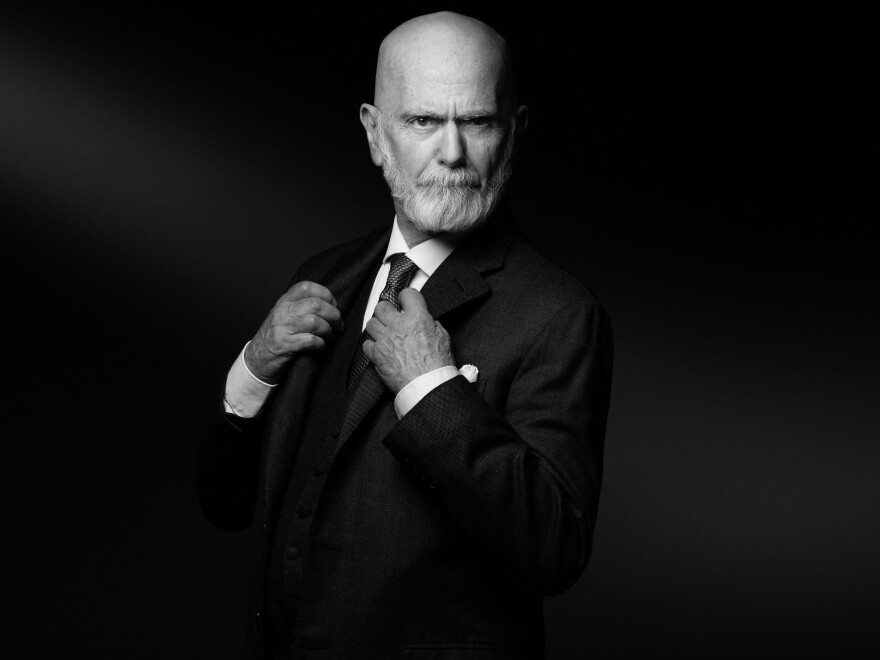Authorities are calling Saturday's mass shooting in Buffalo, N.Y., a racially motivated attack. The suspect allegedly wrote a 180-page document filled with hateful rants about race and ties to the "great replacement." Here's what you need to know about this particular conspiracy theory.
What is the "great replacement"?
In short, the "great replacement" is a conspiracy theory that states that nonwhite individuals are being brought into the United States and other Western countries to "replace" white voters to achieve a political agenda. It is often touted by anti-immigration groups, white supremacists and others, according to the National Immigration Forum.
White supremacists argue that the influx of immigrants, people of color more specifically, will lead to the extinction of the white race.
Payton Gendron, the 18-year-old white male accused of killing 10 people and wounding another three in Buffalo, allegedly said in his screed that the decrease in white birth rates equates to a genocide.
The alleged supermarket shooter and other extremists claim the U.S. has to close its borders to immigrants.
The "great replacement" theory is sometimes seen in other ways such as claims of voter replacement and immigrants invading America, the National Immigration Forum said. The first claim assumes that immigrants and nonwhite people will vote a certain way, ultimately drowning out the votes of white Americans.
Adolphus Belk Jr., professor of political science and African American studies at Winthrop University, said white nationalist movements arise when people of color are seen as a threat in the political and economic realms.
Belk said white nationalists are worried that, "whites will no longer be a majority of the general population, but a plurality, and see that as a threat to their own well-being and the well-being of the nation."
Where does this theory come from?
The "great replacement" theory has roots in French nationalism books dating back to the early 1900s, according to the Anti-Defamation League (ADL). However, the theory's more contemporary use is attributed to Renaud Camus, a French writer who wrote "Le Grand Remplacement" (which translates to "The Great Replacement") in 2011.

Camus' writing was influenced by another French Author, Jean Raspail, whose 1973 novel, The Camp of the Saints, told a fictional tale of migrants banding together to take over France, the ADL said.
According to the ADL, white supremacists blame Jewish people for nonwhite immigration to the U.S., and the "replacement" theory is now associated with antisemitism.
A core belief to the white supremacist movement is the 14-word slogan, "We must secure the existence of our people and a future for White children," according to the Southern Poverty Law Center. That slogan was coined by David Lane, a member of the white supremacist group The Order.

Fast forward to August 2017, when white nationalists rallied at the University of Virginia in Charlottesville. Rally participants chanted, "The Jews will not replace us!"
The "great replacement" and its role in hate crimes
The Buffalo shooting suspect is only one of many violent examples attributed to this idea of the "great replacement."
The U.S. House Subcommittee on Crime, Terrorism and Homeland Security held a hearing about the rise of hate crimes and white nationalism in April 2019. New York representative and Judiciary Committee chairperson Jerrold Nadler had then described the issue as "an urgent crisis in our country."
"Unfortunately, various statistics confirm what most of us have observed, that hate incidents are increasing in the United States," Nadler said. "This increase has occurred during a disturbing rise of white nationalism in our country and across the globe."

He listed several racially motivated attacks: nine people killed at a South Carolina church in 2015; 11 at a synagogue in Pennsylvania in 2018; 50 people shot and killed at a mosque in New Zealand in 2019.
Belk said what makes individual extremists and white nationalist groups so dangerous are the lengths they are willing to go to in order protect their position in society.
"They are willing to use any means that are available to preserve and defend their position in society ... it's almost like a sort of holy war, a conflict, where they see themselves as taking the action directly to the offending culture and people by eliminating them," Belk said.
The suspect in custody for Buffalo's most recent mass shooting traveled from Broome County, N.Y., some 200 miles away, to carry out his attack, according to police. The overwhelming majority of the victims were Black.
Copyright 2022 NPR. To see more, visit https://www.npr.org.



